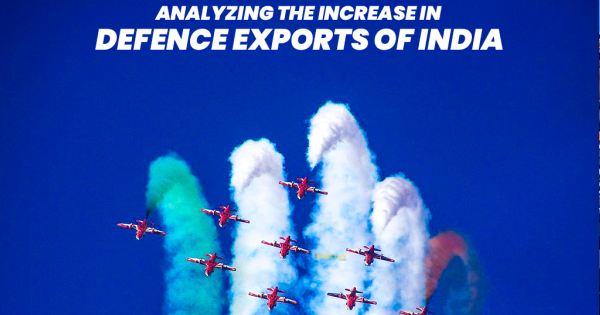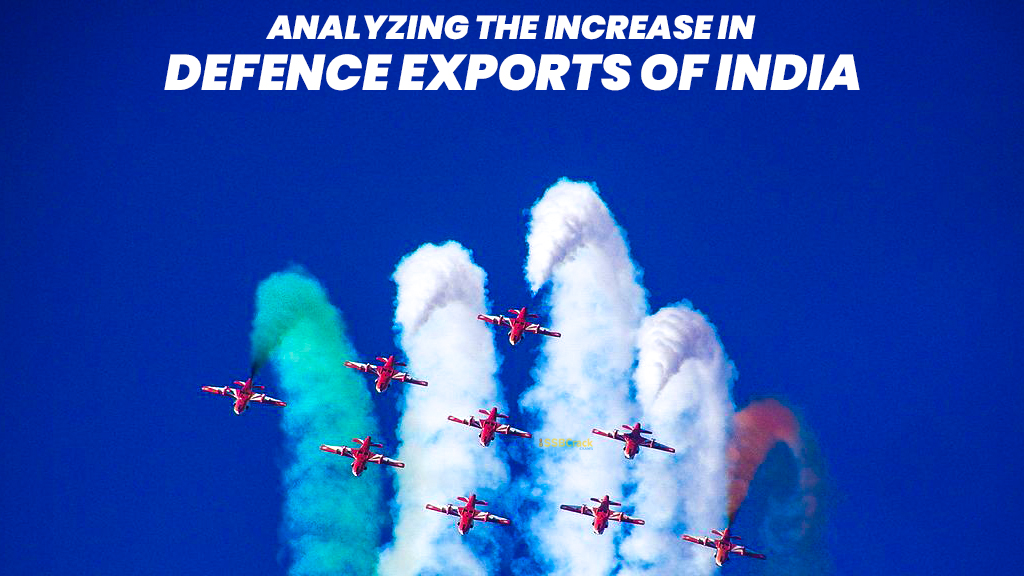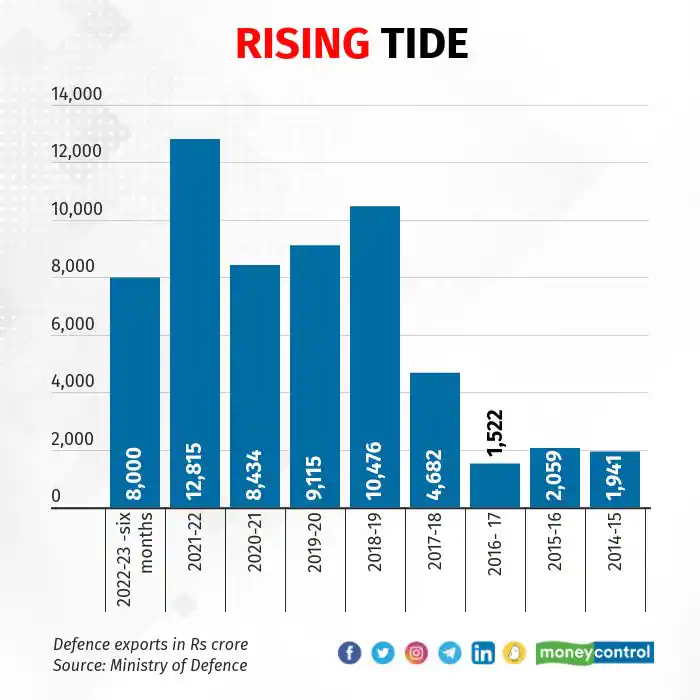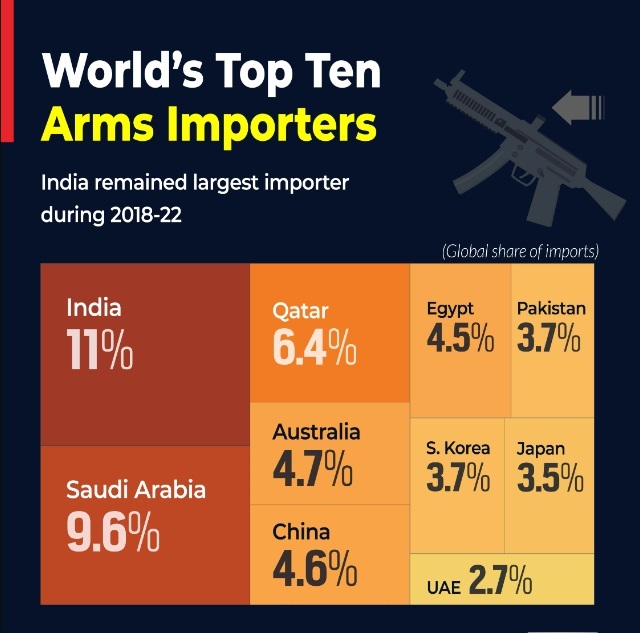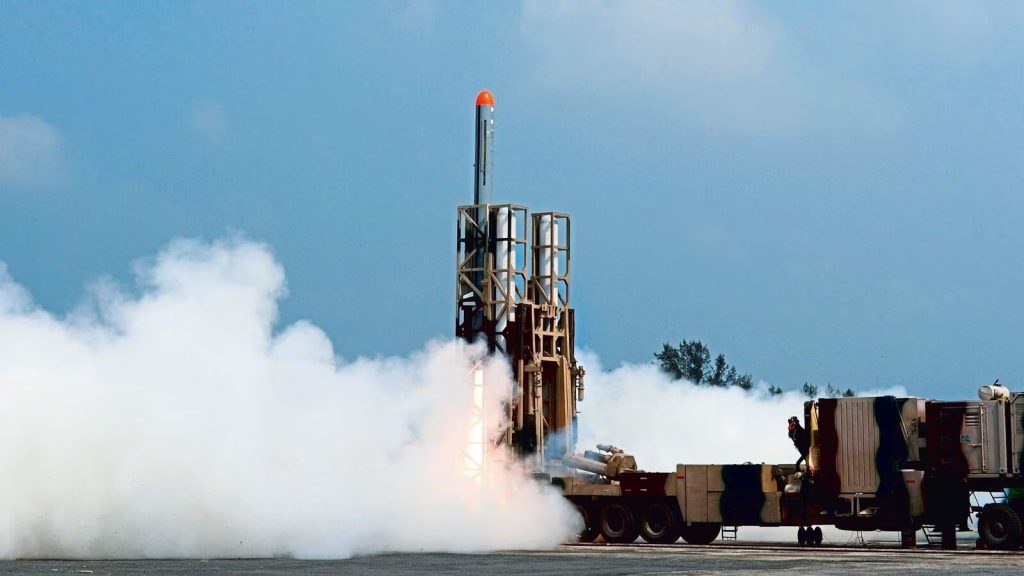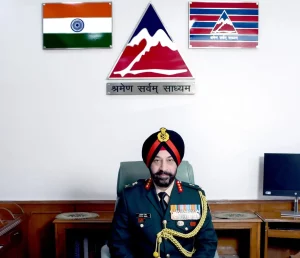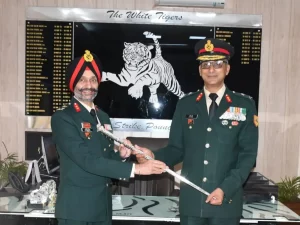Over the past ten years, the Indian defence industry has grown significantly, and the government has actively encouraged defence exports as a way to raise money and spur the nation’s economic development. In the fiscal year 2022–2023, India’s defence exports reached a record high of over INR 16,000 crore (almost $1.95 billion), with the country now exporting to more than 80 nations globally.
Defence Exports of India
The public and private sectors of the Indian economy both produce systems, technologies, and equipment for the military. India has been exporting a variety of military hardware, including helicopters, armoured vehicles, planes, and naval vessels. By 2025, the government hopes to export $5 billion worth of defence goods.
Also read: India’s Defence Exports Will Rise To Rs 40,000 Crore By 2026: Defence Minister
In accordance with the goals of the Make in India initiative, the Government of India has established an Export Promotion Council (EPC) to promote defence exports. Among the key initiatives adopted to boost such exports are expediting export processes, offering financial incentives, and building collaborations with foreign enterprises.
Simplifying Export Procedures: The Indian government has been simplifying export procedures to make it easier for corporations to export defensive equipment and technologies. The government has launched the India Defence Mart, an online gateway for defence exports that allows businesses to apply for export licences and follow their applications online. The government has also simplified the procedure of getting no-objection certifications (NOCs) from several agencies engaged in the export process.
Financial Incentives: To encourage defence product exports, the government has implemented the Scheme for Promotion of Defence Exports (SPDE), which includes financial support for attending international defence shows, marketing, and publicity of Indian defence products overseas. To support the modernization of the Indian defence industry, the government has also introduced the Technology Upgradation Fund Scheme (TUFS). The programme offers financial help for technological advancements and the upgrading of manufacturing facilities.
Also read: India Expected To Sell Brahmos Missile Worth $200 Million To Indonesia
Strategic Partnership Model: The government has implemented a Strategic Partnership Model to increase domestic defence equipment production through collaborations with foreign corporations. The concept promotes collaboration between domestic and foreign enterprises in the development of new technology and products. India and Russia have been developing a hypersonic variant of the BrahMos missile. The BrahMos missile exemplifies India and Russia’s robust defence collaboration, and the two nations are determined to strengthen their strategic alliance in the defence industry in the future.
Defence Offset Policy: The government has implemented a Defence Offset Policy to provide additional benefits to buyers of products from foreign suppliers. Foreign OEMs that win contracts worth more than Rs 2,000 crore must invest at least 30% of the contract value in Indian enterprises as offsets. The previous threshold for using offsets was Rs 300 crore. Contracts with a contract value of less than Rs 2,000 crore will be exempt from the offset obligation. The policy’s purpose is to boost domestic manufacturing and technological transfer in the defence sector.
Significance of Expanding Defence Exports
The expanding Indian military sector provides numerous prospects for international corporations to invest in the country. The Indian government has actively encouraged collaborations between indigenous and foreign firms to develop new technology and products. The government has formed a strategic partnership model with the goal of increasing domestic defence equipment production through agreements with foreign firms.
Also read: Brahmos In Talks To Sell Missile To South East Asia, Middle East Nations
India’s military sector offers potential for investment in a variety of fields, including R&D, manufacturing, maintenance, and repair. Furthermore, the trained workforce, technological capabilities, and low manufacturing costs make the country an appealing destination for foreign investment.
To crack the SSB Interview and join the Indian Army as an Officer, You can join our SSB interview live classes batch and we recommend you to Enroll SSB INTERVIEW ONLINE COURSE. Trusted by thousands of defence aspirants.
Also read:
- Is Brahmos Missile Enough For India?
- About Agni Prime- Nuclear-Capable Missile
- Major Difference Between Brahmos V/S S400?
- What Is A Missile Propulsion System And How Does It Work?
- Top 10 Anti-Aircraft Missile Systems In The World
- All About IAF SPYDER Surface-To-Air Missile
- Difference Between Ballistic Missile Vs Cruise Missile?
- Unfolding The Relevance Of AGNI Series Missiles From AGNI I To AGNI VI [Fully Explained]
